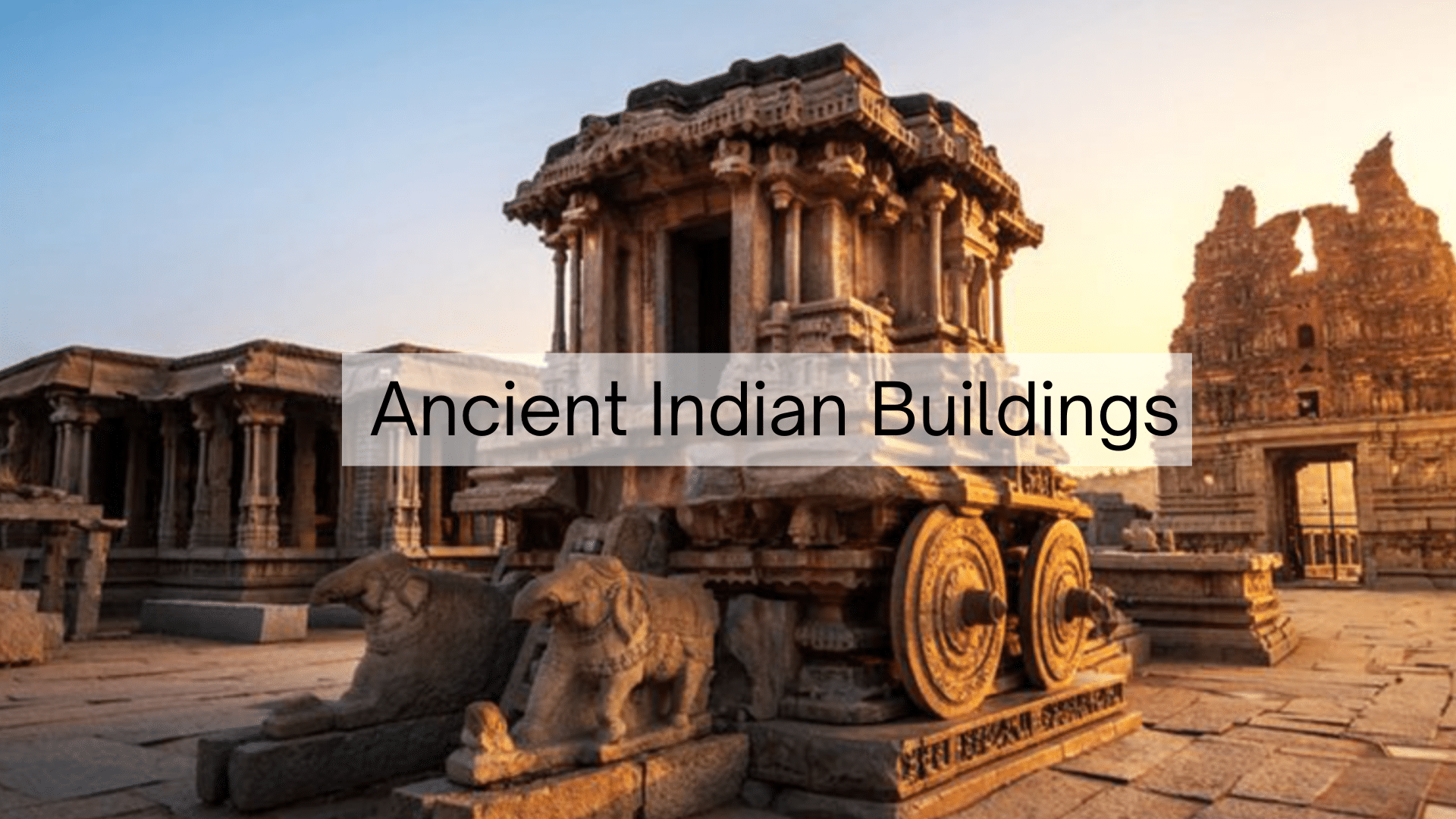21 Iconic Ancient Indian Buildings
India’s ancient architecture is a testament to its rich history, diverse cultural influences, and exceptional craftsmanship.
From the stunning temples of Khajuraho to the awe-inspiring rock-cut caves of Ajanta, these structures showcase the incredible craftsmanship and advanced engineering of ancient Indian civilizations.
Each building tells a unique story, blending artistic vision with religious and cultural significance. With architectural styles ranging from Hindu temples to Indo-Islamic monuments, India’s ancient buildings offer a glimpse into its vibrant past.
In this blog, we will explore some of the most famous ancient structures in India, highlighting their cultural, historical, and architectural importance.
Famous Ancient Buildings in India
India’s architectural heritage stretches across thousands of years, showcasing a wide range of styles, construction methods, and cultural influences.
Each structure reflects the artistic ideas, technical skills, and spiritual values of its period.
From ancient rock-cut caves to detailed temples and impressive Mughal buildings, these sites still draw the interest of visitors and scholars today.
1. Taj Mahal (Agra)
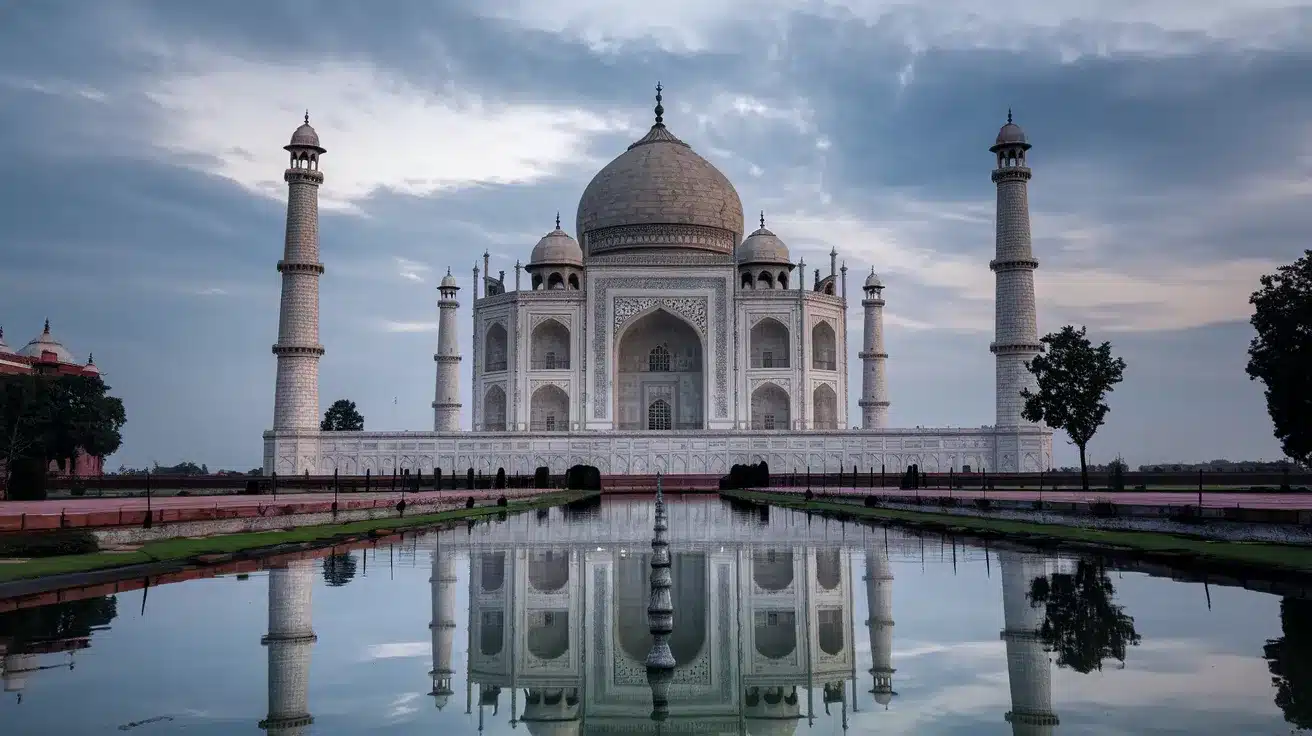
Built between 1631 and 1648 by Emperor Shah Jahan in memory of his wife Mumtaz Mahal, the
Taj Mahal stands as one of India’s most recognizable structures. Made entirely of white marble, the monument features a 73-meter central dome, four slender minarets, and a formal garden layout with reflecting pools.
The marble is inlaid with semi-precious stones using a method called pietra dura. Combining Indian, Persian, and Islamic design, the structure remains a symbol of devotion and craftsmanship.
2. Qutub Minar (Delhi)
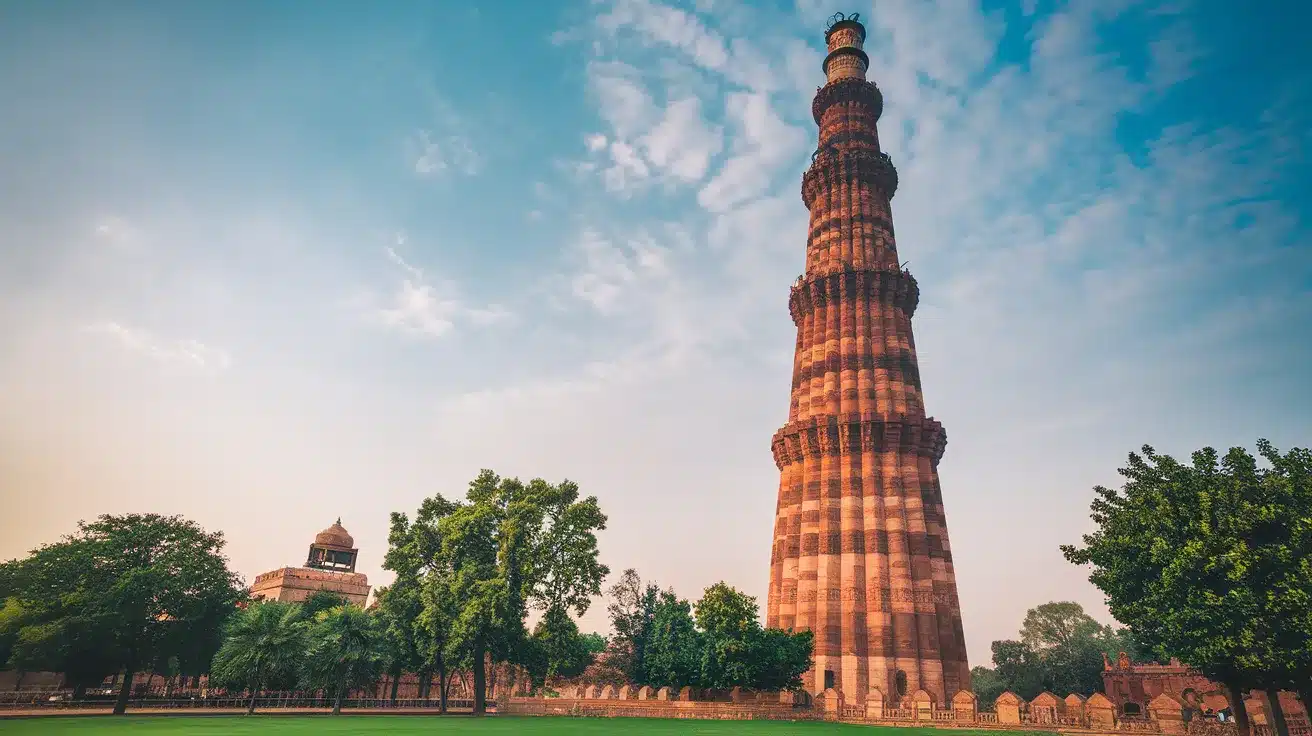
The Qutub Minar, started in 1193 by Qutb-ud-din Aibak and completed by his successors, is a five-tiered brick minaret standing 73 meters tall.
The diameter reduces from 14.3 meters at the base to 2.7 meters at the top, giving it a tapering shape. It features detailed Islamic calligraphy and some Hindu design motifs, reflecting the era’s cultural layers.
Nearby stands the Iron Pillar, dating back to 402 CE, known for its corrosion resistance and historic value.
3. Sanchi Stupa (Madhya Pradesh)
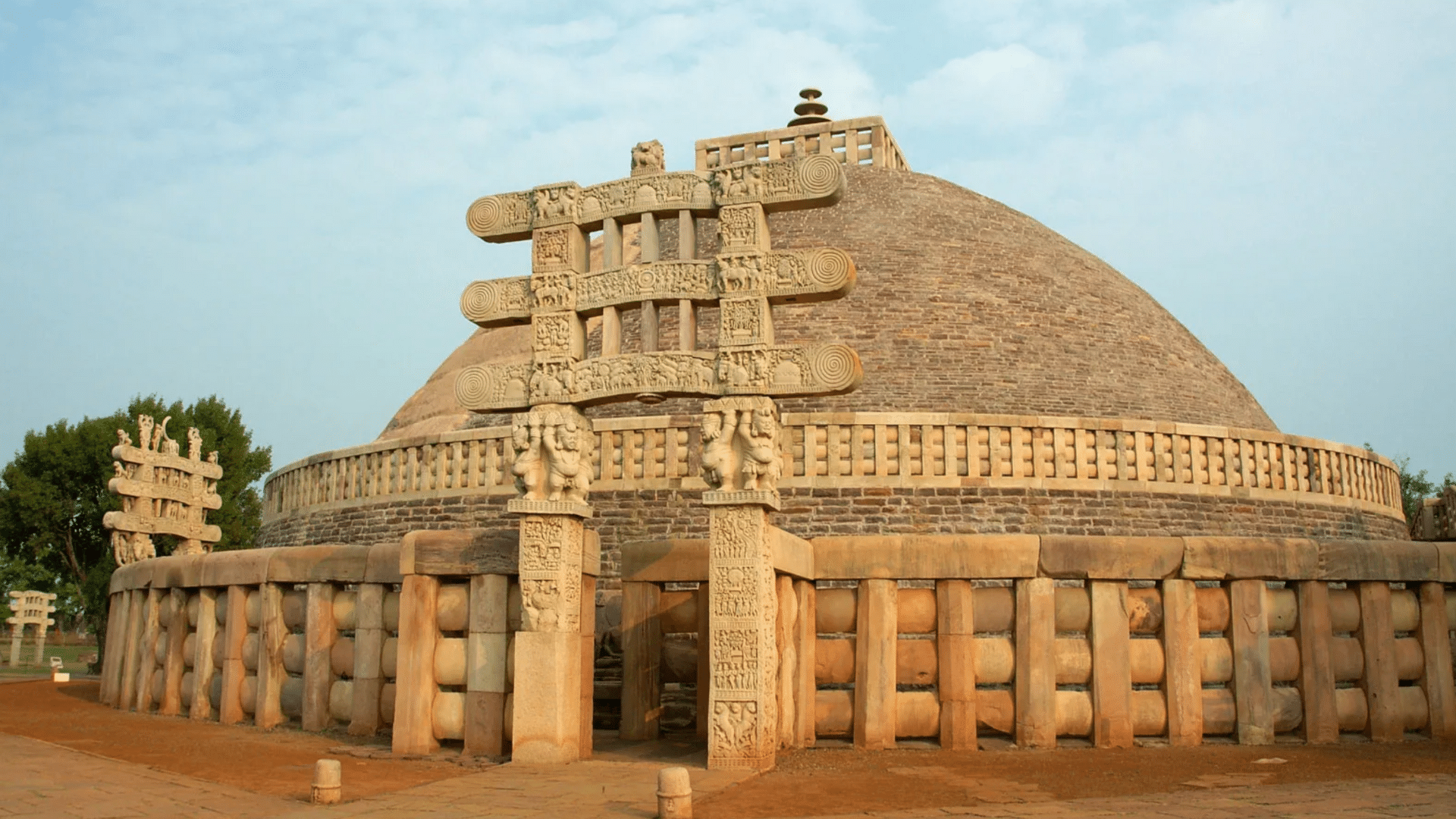
Built during the 3rd century BCE by Emperor Ashoka, the Sanchi Stupa is one of the oldest stone structures in India.
It has a hemispherical dome, 16 meters high and 36 meters wide, which holds relics of the Buddha.
Four gateways (toranas), facing each cardinal direction, are covered in carvings that show stories from Buddha’s life and scenes of daily life from that time.
4. Khajuraho Temples (Madhya Pradesh)
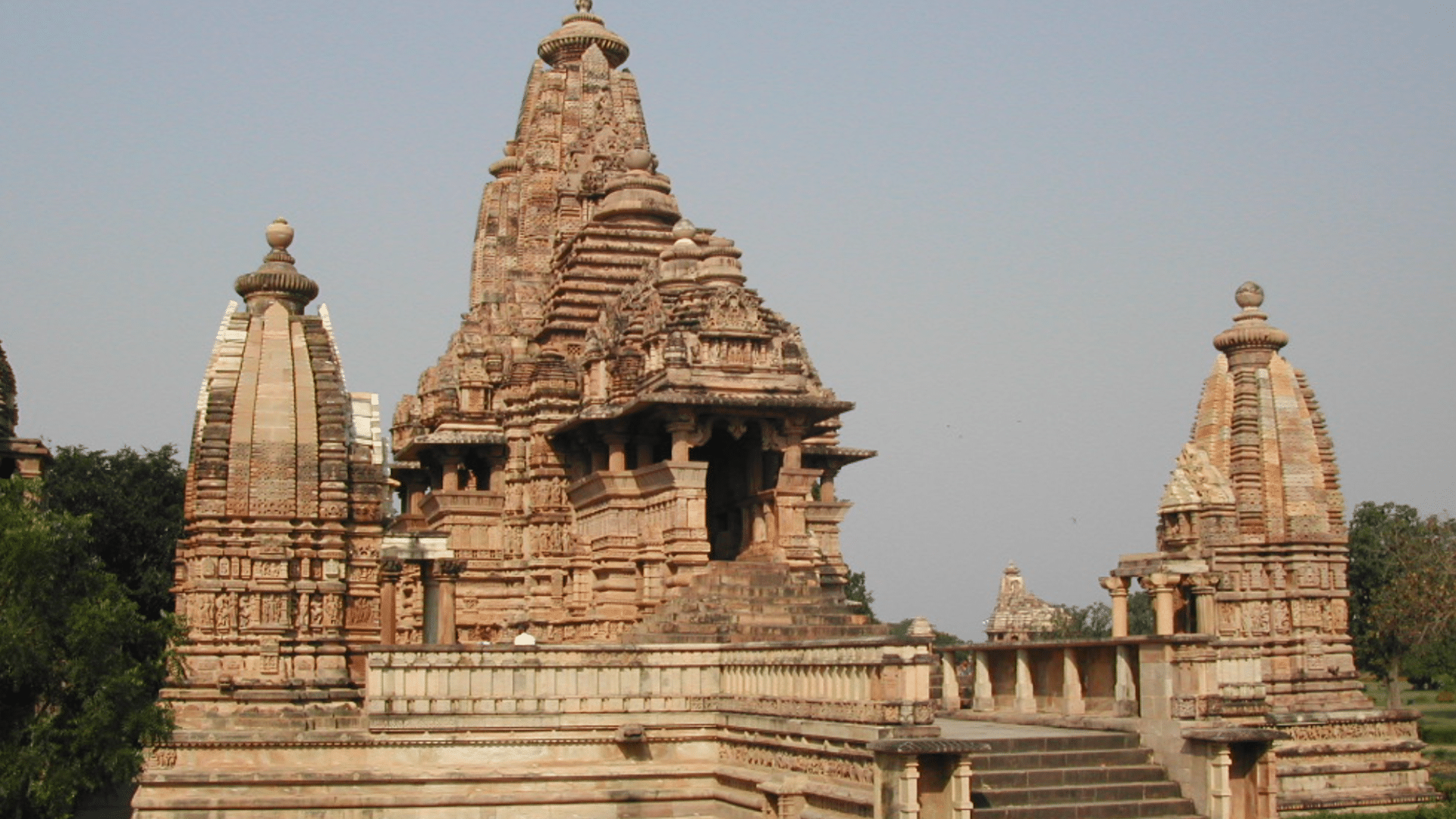
Constructed between 950 and 1050 CE by the Chandela rulers, the Khajuraho group originally had 85 temples, of which around 25 remain today.
These temples are known for their detailed carvings that represent various aspects of life, including music, dance, and other daily activities.
5. Ellora Caves (Maharashtra)
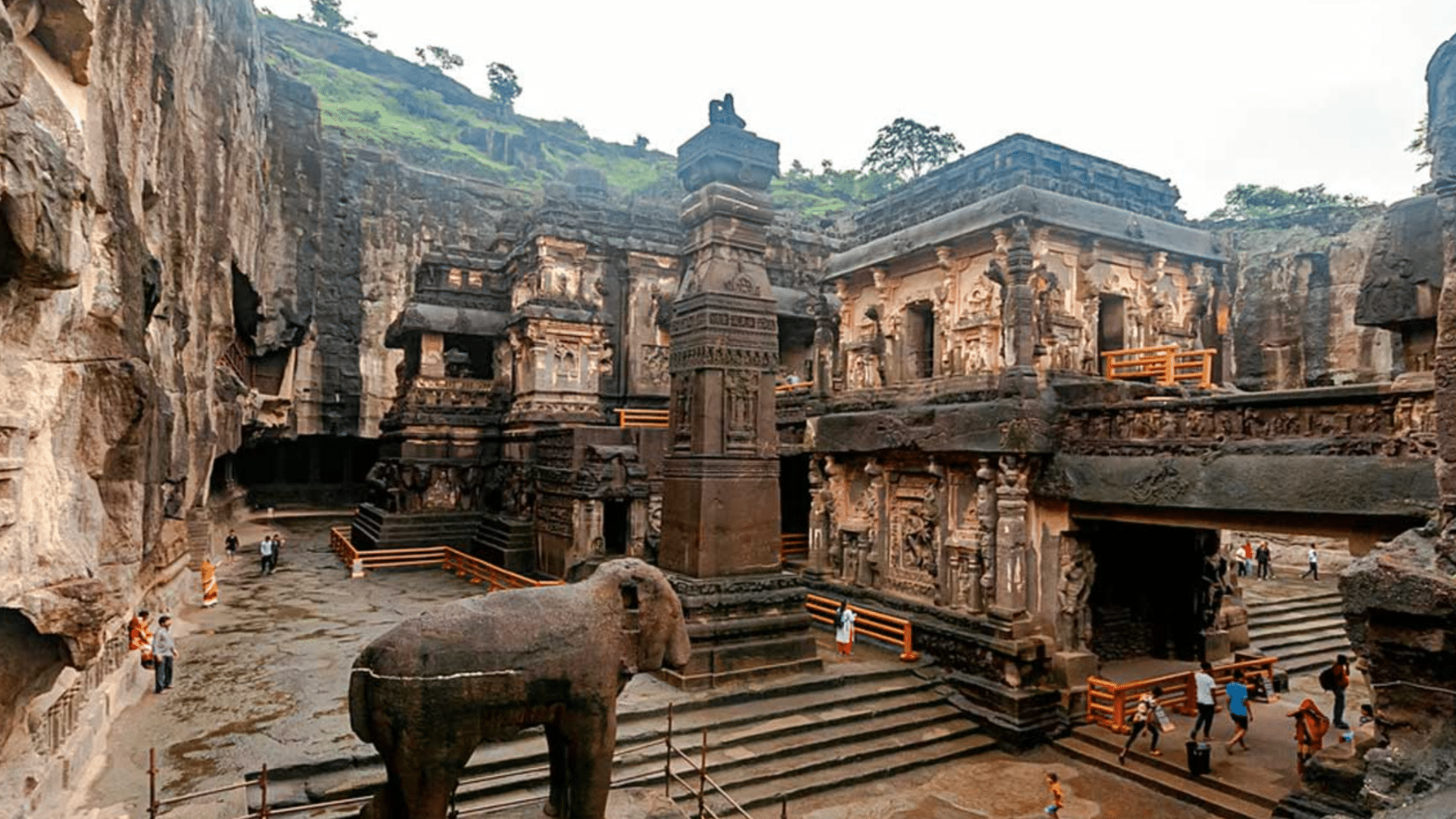
Spanning the 6th to 10th centuries, the 34 Ellora Caves include Buddhist, Hindu, and Jain structures.
These rock-cut buildings were carved directly into a hillside. Cave 16, known as the Kailasa Temple, is especially impressive.
It was carved from a single rock starting from the top and required the removal of approximately 200,000 tons of stone. The temple includes shrines, courtyards, and sculpted figures.
6. Brihadeeswarar Temple (Tamil Nadu)
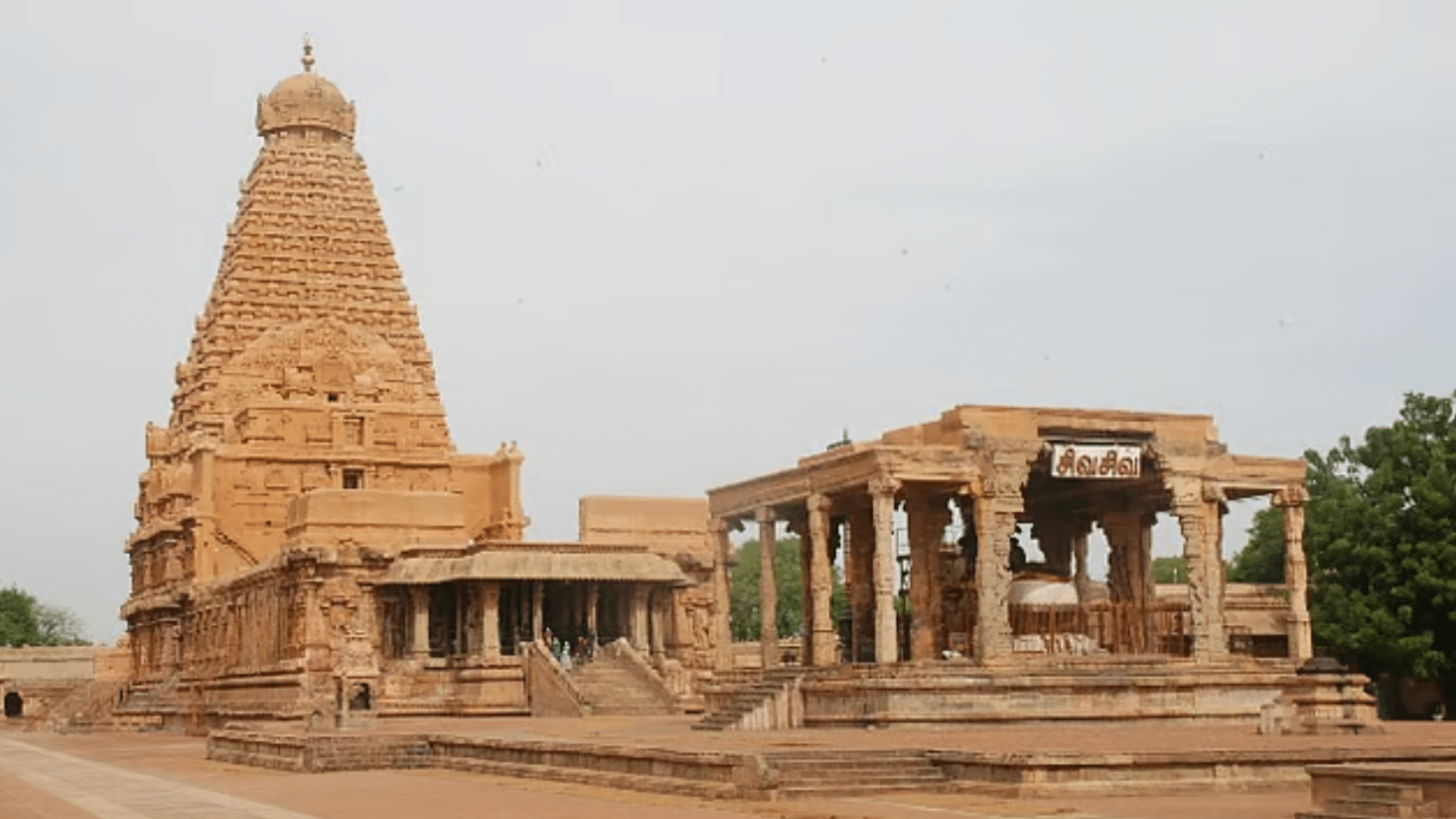
Commissioned by Raja Raja Chola I and completed in 1010 CE, the Brihadeeswarar Temple is made entirely of granite.
The tower rises to 66 meters, and an 80-ton stone sits at the top. It was placed there using a long sloped ramp, a remarkable construction method for the time.
The temple complex covers 3.7 hectares and includes a large Nandi statue carved from a single piece of stone.
7. Hampi (Karnataka)
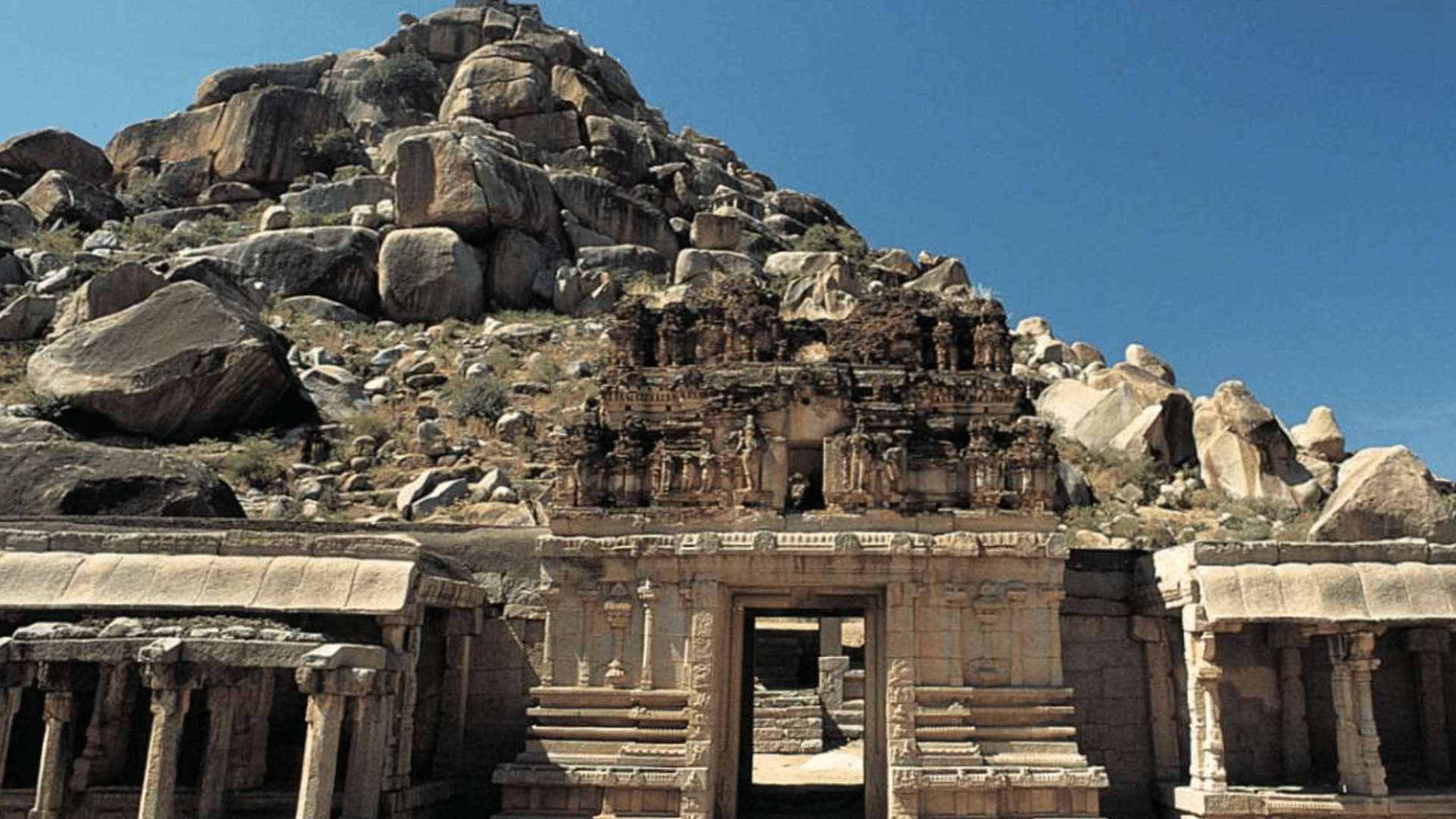
The historic site of Hampi served as the capital of the Vijayanagara Empire between the 14th and 16th centuries.
Spanning over 4,000 hectares, it includes temple complexes, royal enclosures, market areas, and advanced systems for water management.
Features such as the stone chariot, musical pillars, and large ceremonial halls show the engineering and planning skills of the time.
8. Konark Sun Temple (Odisha)
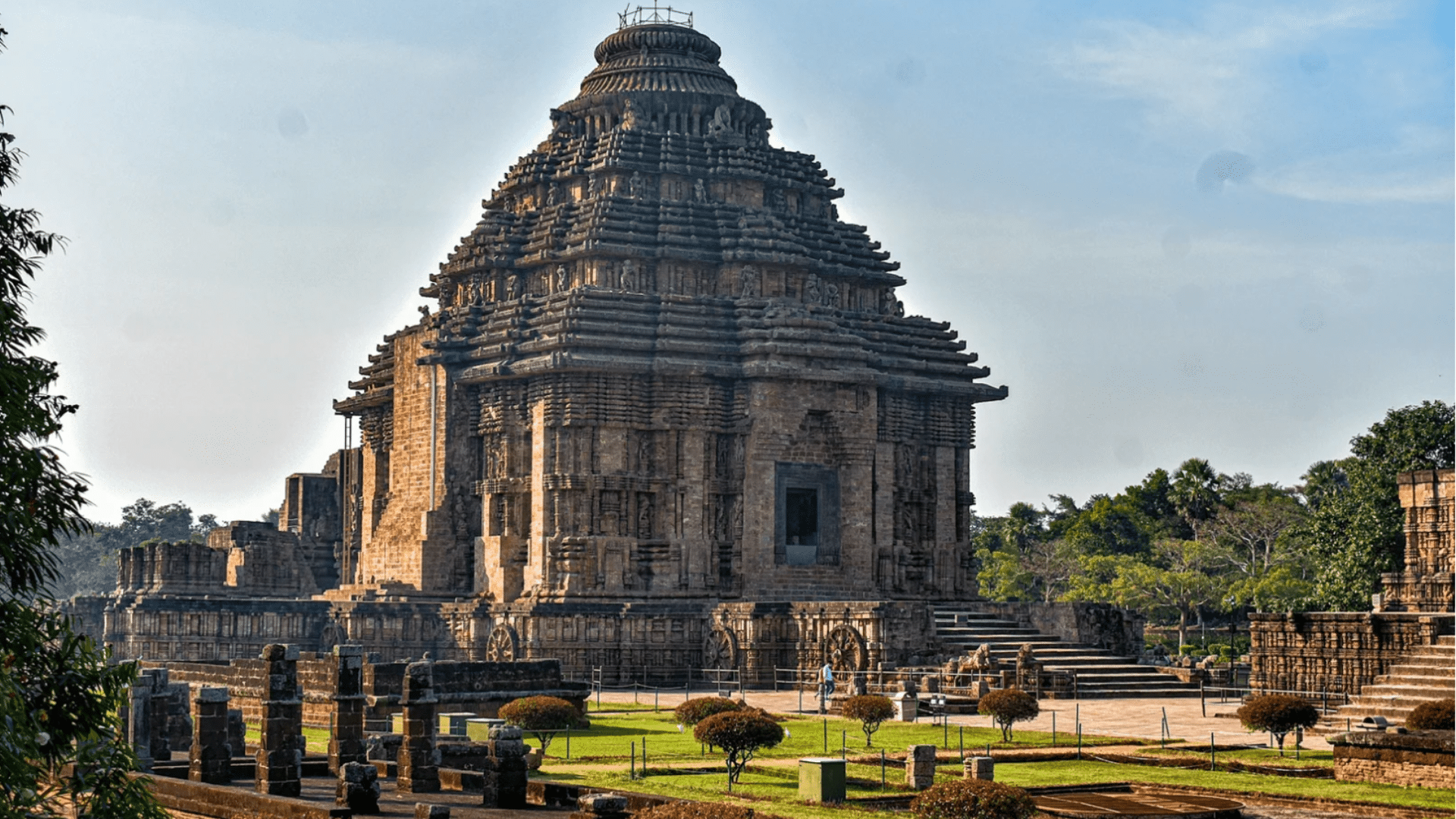
Built in the 13th century, the Konark Sun Temple is designed to resemble a colossal chariot with twelve pairs of wheels and seven horses.
Each of the 24 wheels acts as a sundial, marking time accurately through the movement of the sun.
The temple’s walls are filled with carvings showing stories, rituals, and daily life from the period. The site highlights the link between science, art, and devotion.
9. Red Fort (Delhi)

Constructed from 1639 to 1648 under the direction of Shah Jahan, the Red Fort is surrounded by red sandstone walls that stretch for 2.5 kilometers and reach a height of 33 meters.
Inside the fort are marble palaces, audience halls, water features, and gardens designed with geometric patterns.
The architectural details include scalloped arches and colored stone inlay work.
10. Humayun’s Tomb (Delhi)
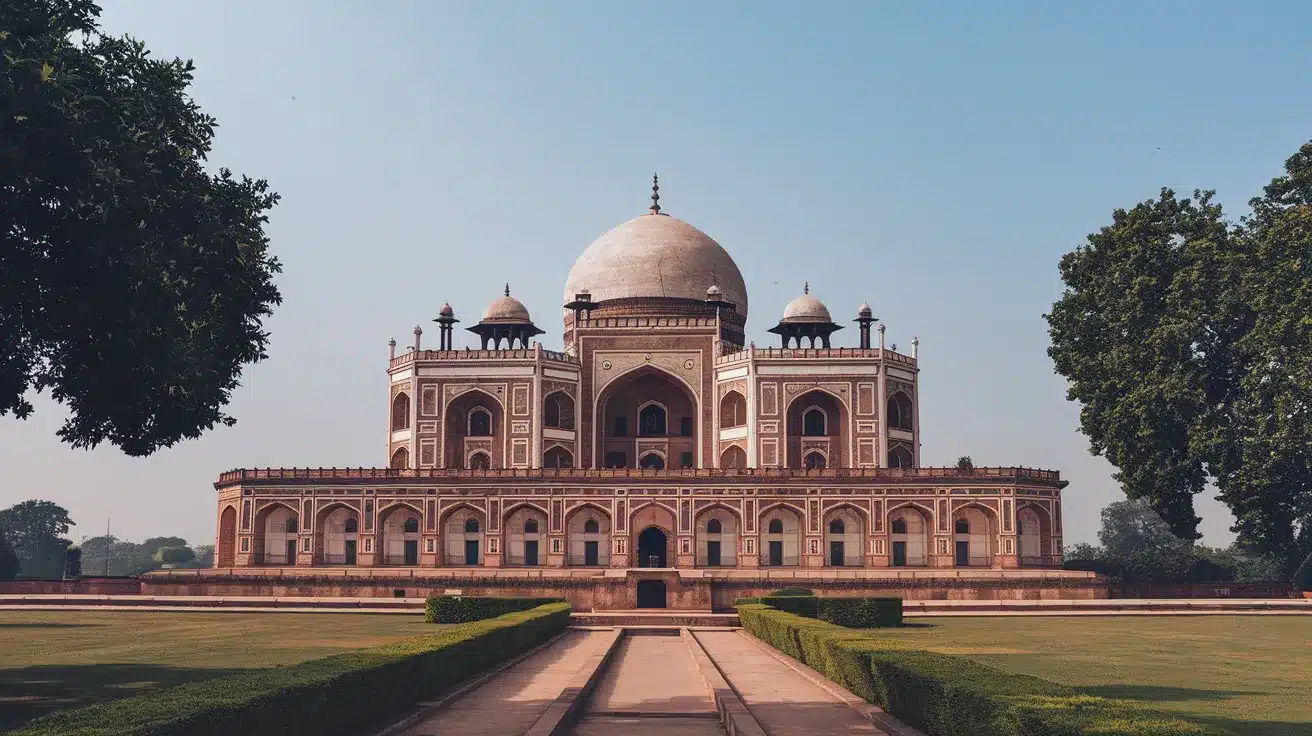
Built between 1569 and 1570, this was the first tomb in India set in a formal garden. It houses the remains of Emperor Humayun and is designed in red sandstone with white marble accents.
The garden follows the Persian charbagh layout, dividing the area into four parts with water channels.
The structure laid the foundation for later Mughal tombs, including the Taj Mahal.
11. Meenakshi Temple (Tamil Nadu)
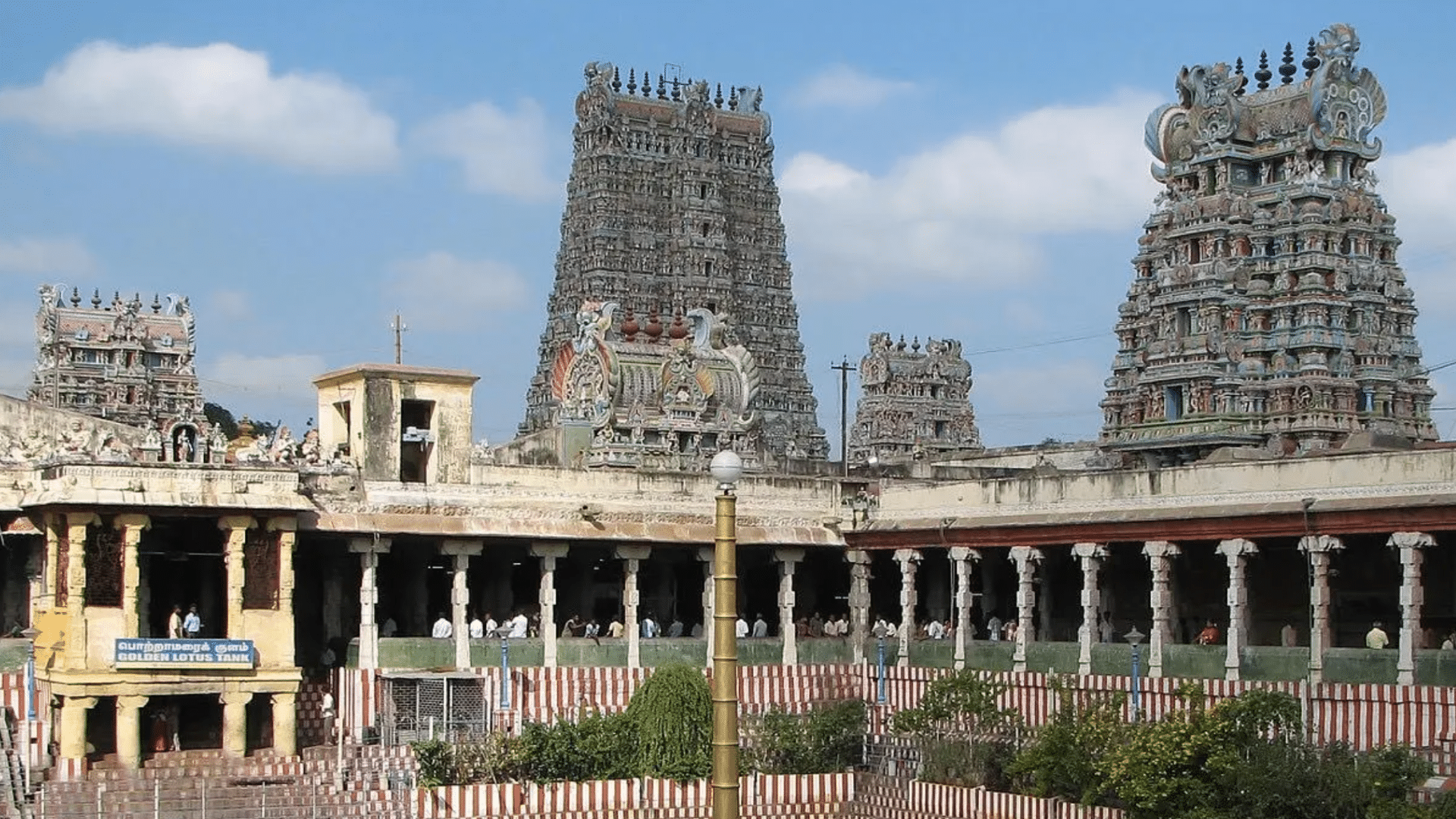
The Meenakshi Temple has been a center of worship for over 1,700 years and was expanded significantly in the 16th and 17th centuries.
It includes 14 gopurams, or entrance towers, with the tallest reaching 52 meters. The complex contains thousands of stone figures and a 1,000-pillar hall.
An annual festival lasting ten days draws large crowds to honor the goddess Meenakshi.
12. Jantar Mantar (Jaipur)
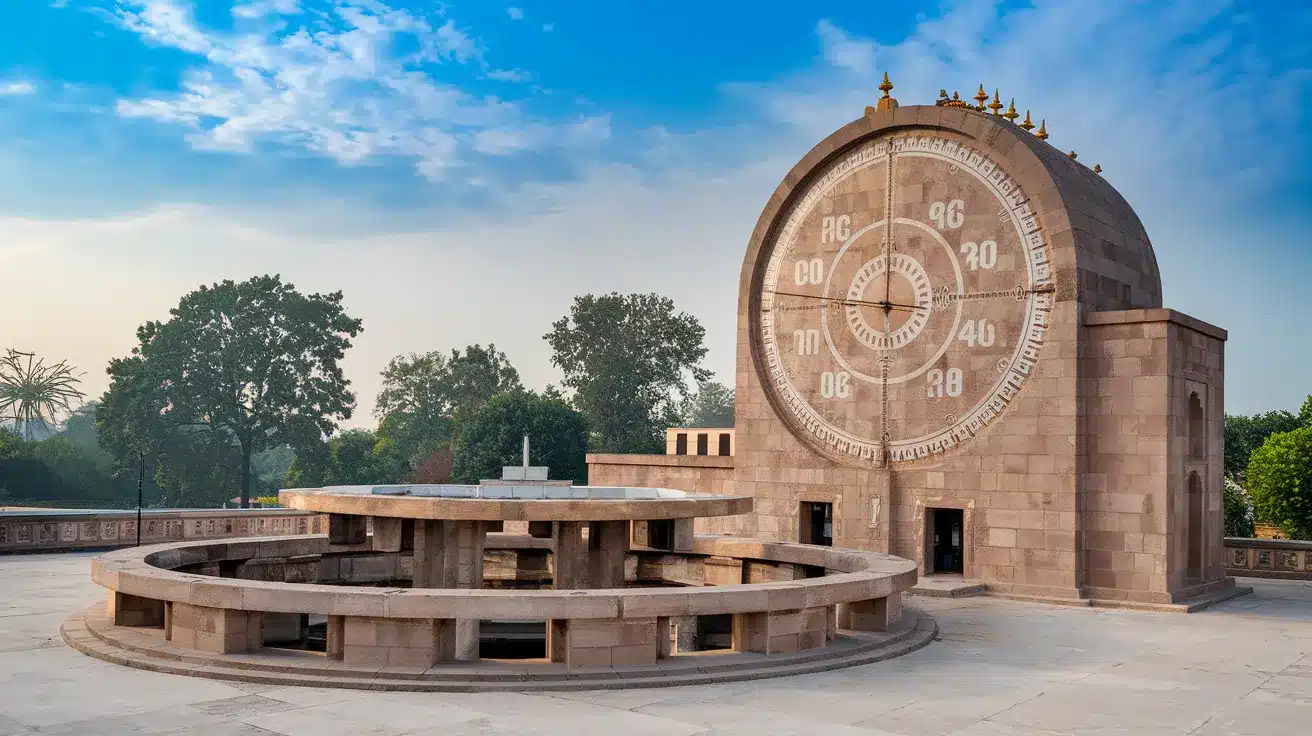
Commissioned in 1734 by Maharaja Jai Singh II, the Jantar Mantar in Jaipur is one of the best-preserved astronomical observatories.
It includes 19 instruments, with the Samrat Yantra standing out as the largest stone sundial in the world.
The instruments are used to measure time and observe celestial bodies, demonstrating knowledge of astronomy and mathematics.
13. Rani ki Vav (Gujarat)
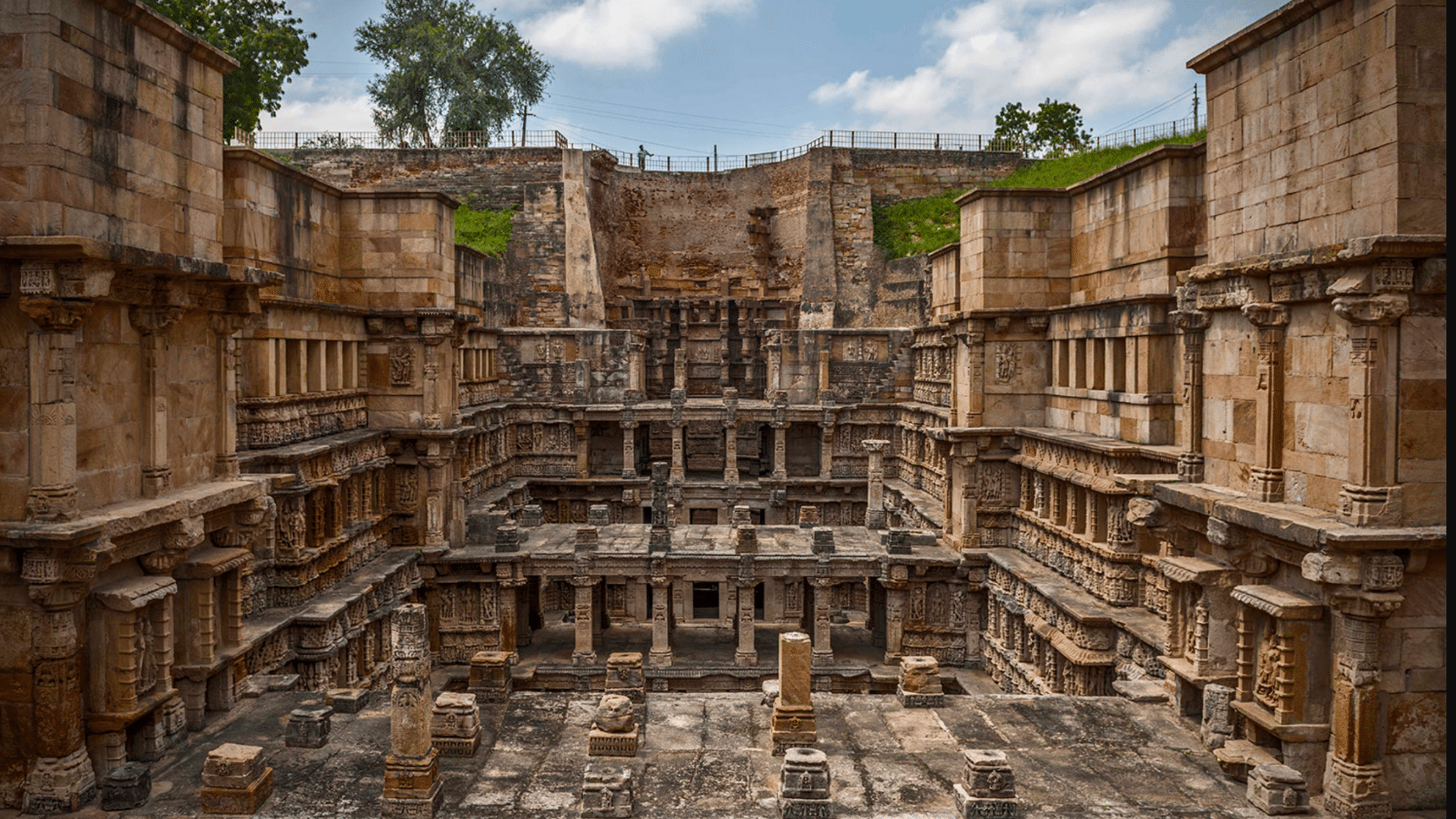
Built in 1063 CE by Queen Udayamati, Rani ki Vav is a stepwell with seven levels and more than 500 carvings on its walls.
The design resembles an inverted temple, where visitors descend into the ground.
It also includes cooling chambers that provided relief from heat, showing early awareness of climate needs.
14. Bodh Gaya (Bihar)
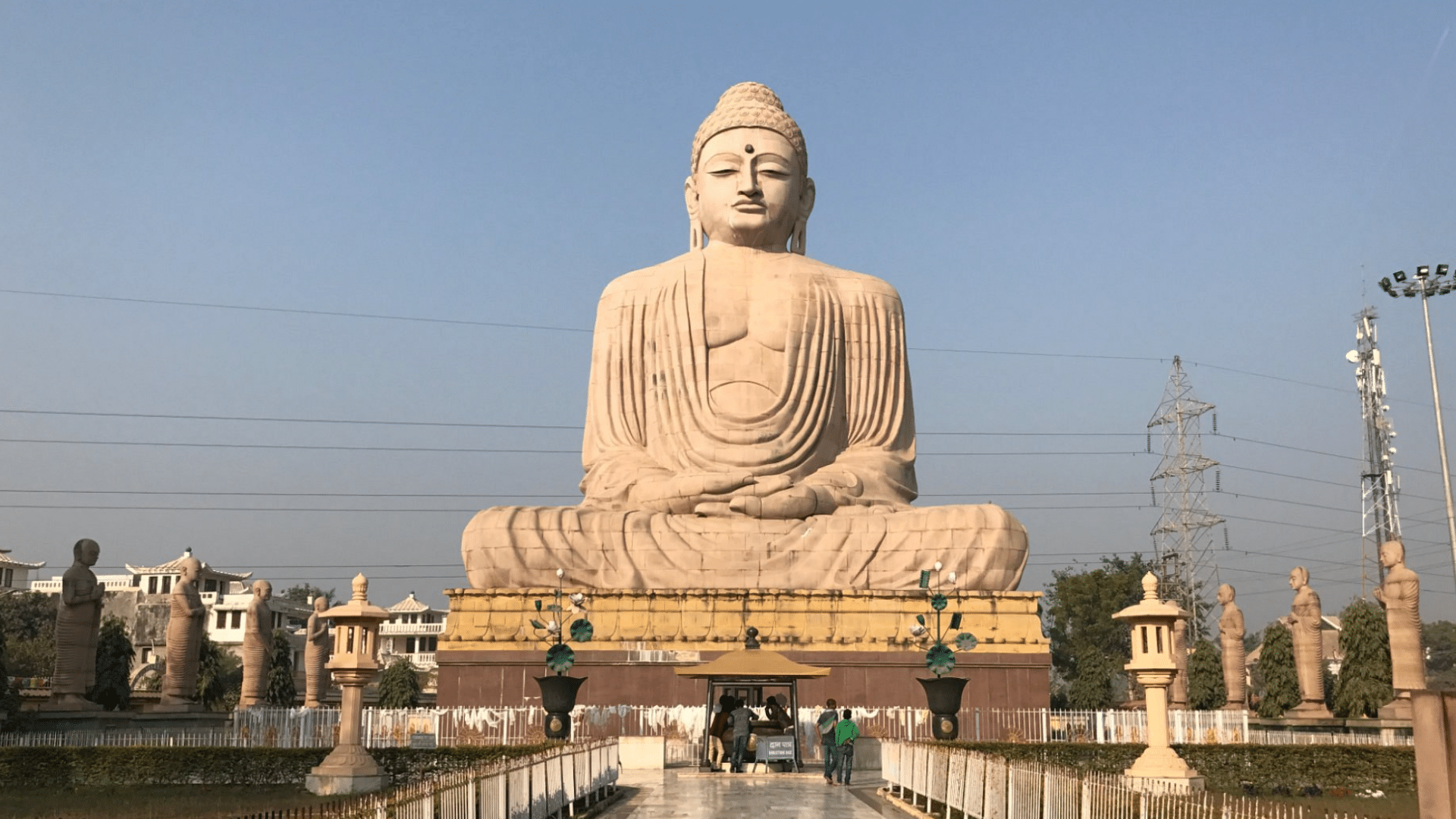
Bodh Gaya is where Siddhartha Gautama is believed to have reached enlightenment under the Bodhi Tree.
The Mahabodhi Temple, dating from the 5th or 6th century, has a pyramidal spire and stands 52 meters tall.
The complex includes stone railings, a seat believed to be where Buddha sat, and monasteries from several Asian countries.
15. Kailasa Temple (Ellora, Maharashtra)
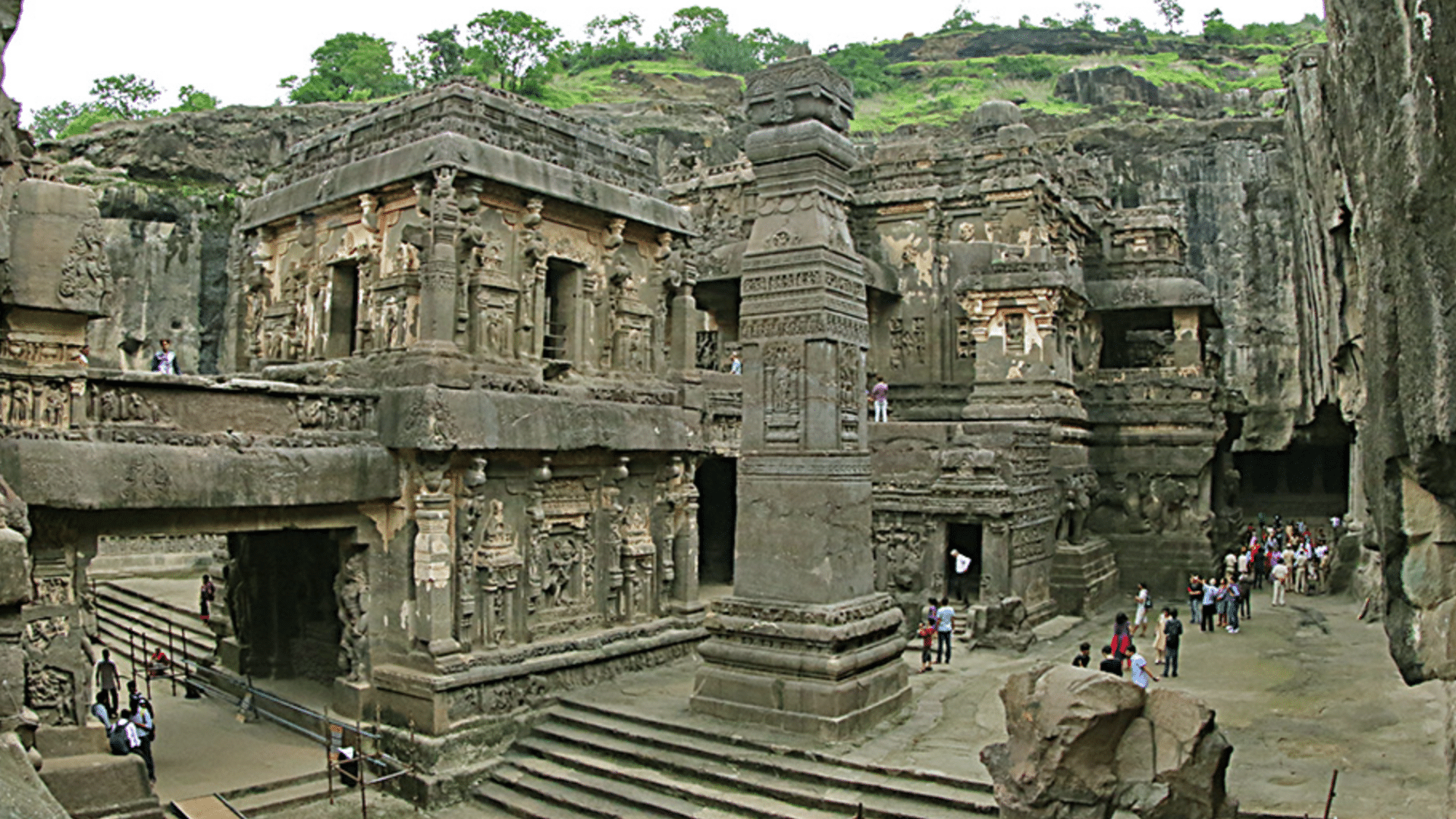
Carved in the 8th century, the Kailasa Temple is considered the largest monolithic temple in the world.
It was created from a single rock using a top-down method. The three-level temple complex includes sculptures of deities, scenes from stories, and spaces for rituals and gatherings.
About 400,000 tons of stone were removed to complete the temple.
16.Virupaksha Temple (Hampi, Karnataka)
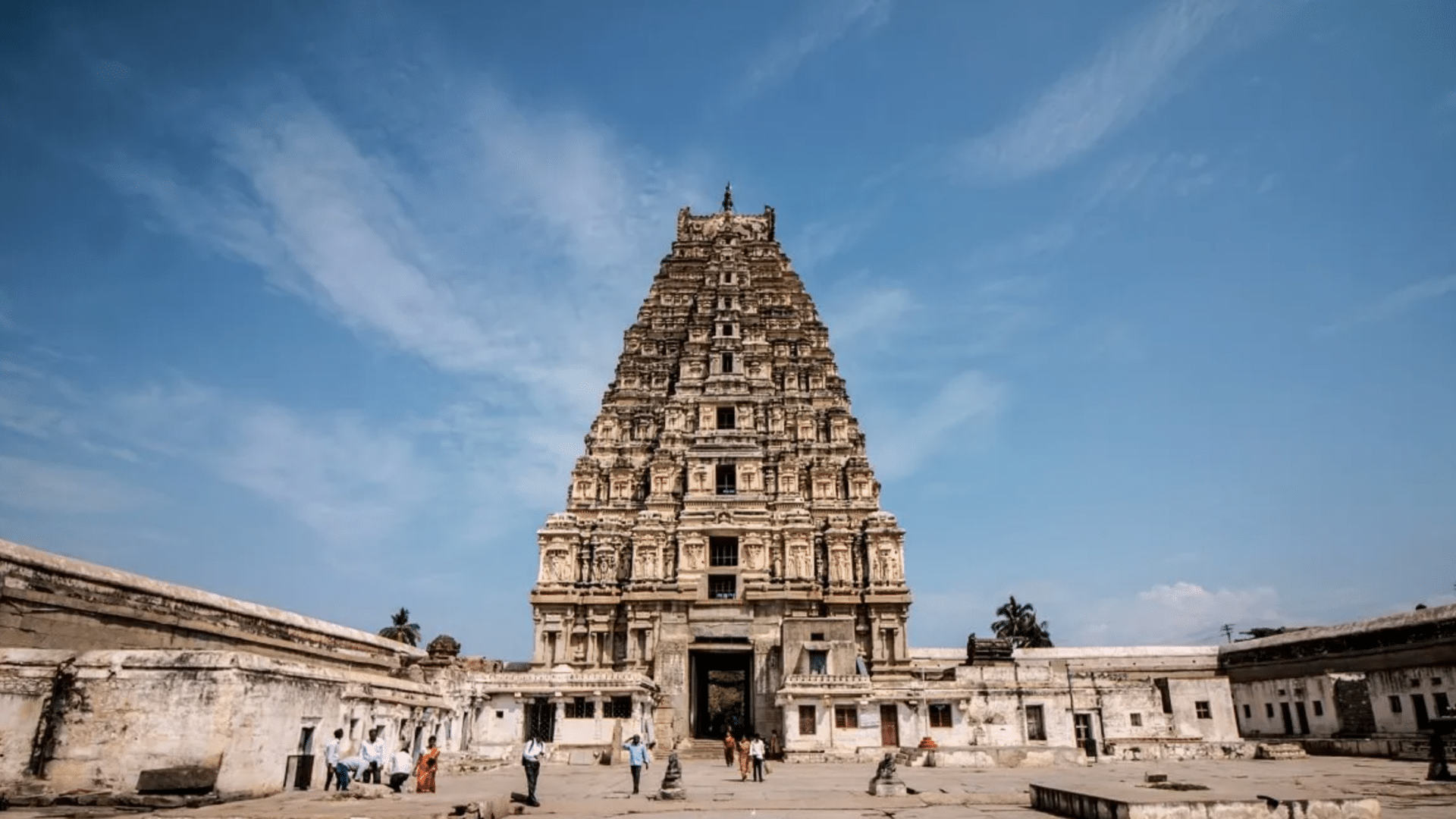
Located in Hampi, Karnataka, the Virupaksha Temple is one of India’s oldest functioning Hindu temples, dedicated to Lord Shiva.
Built in the 7th century and expanded in the 14th century during the Vijayanagara Empire, its most striking feature is the 160-foot main gopuram (tower).
Notable features include the nine-tiered eastern gopuram, the inner sanctum housing the Shiva linga, and a unique inverted shadow of the main tower visible inside.
The temple remains an active worship site and hosts the annual Virupaksha Car Festival.
17. Ajanta Caves (Maharashtra)
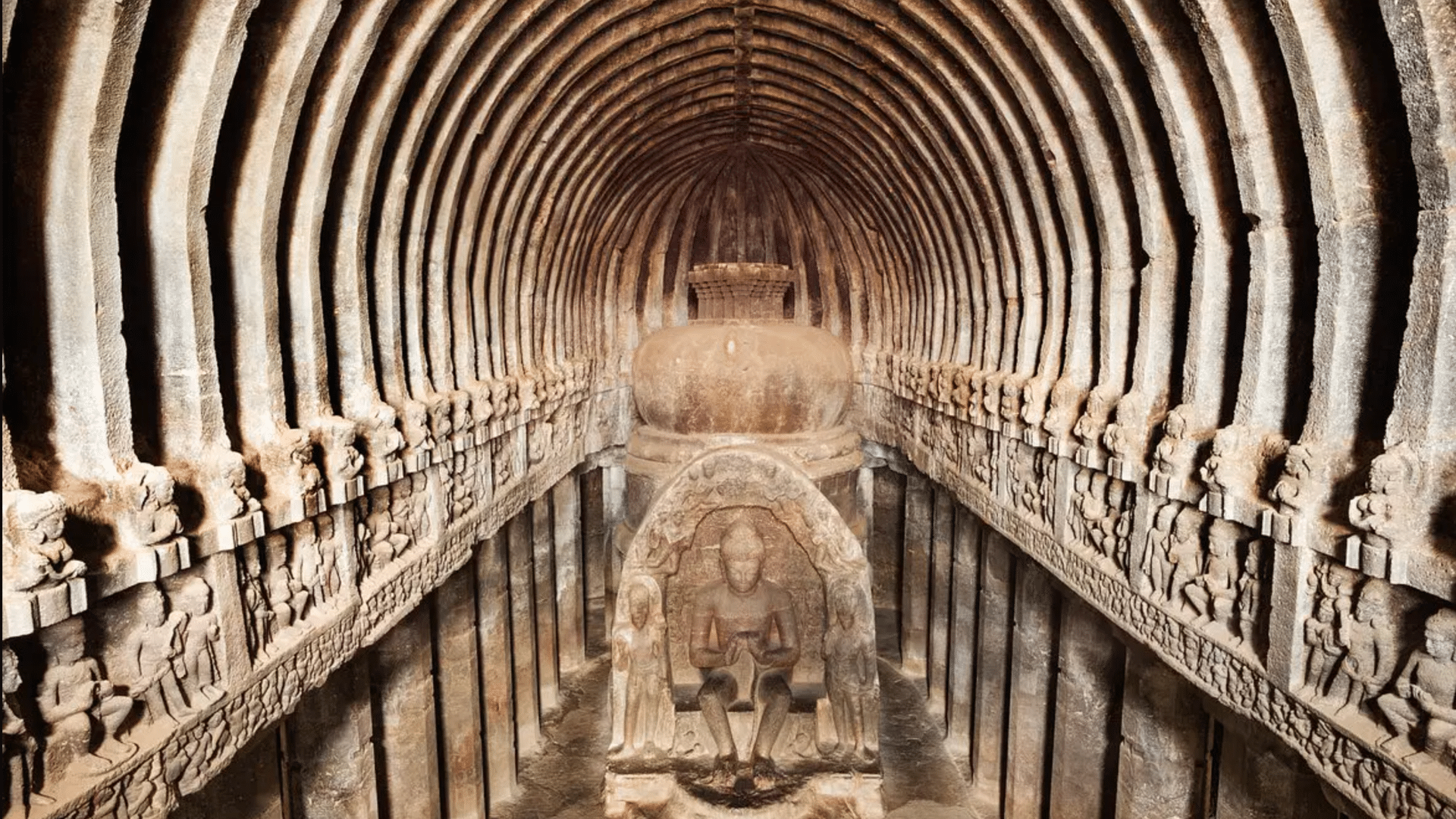
The Ajanta Caves consist of 30 Buddhist cave monuments carved into a horseshoe-shaped cliff between the 2nd century BCE and 650 CE.
These caves include monasteries and halls decorated with paintings and sculptures. The murals show scenes from Buddha’s life and details about clothing, customs, and settings of the time.
18.Vittala Temple (Hampi, Karnataka)
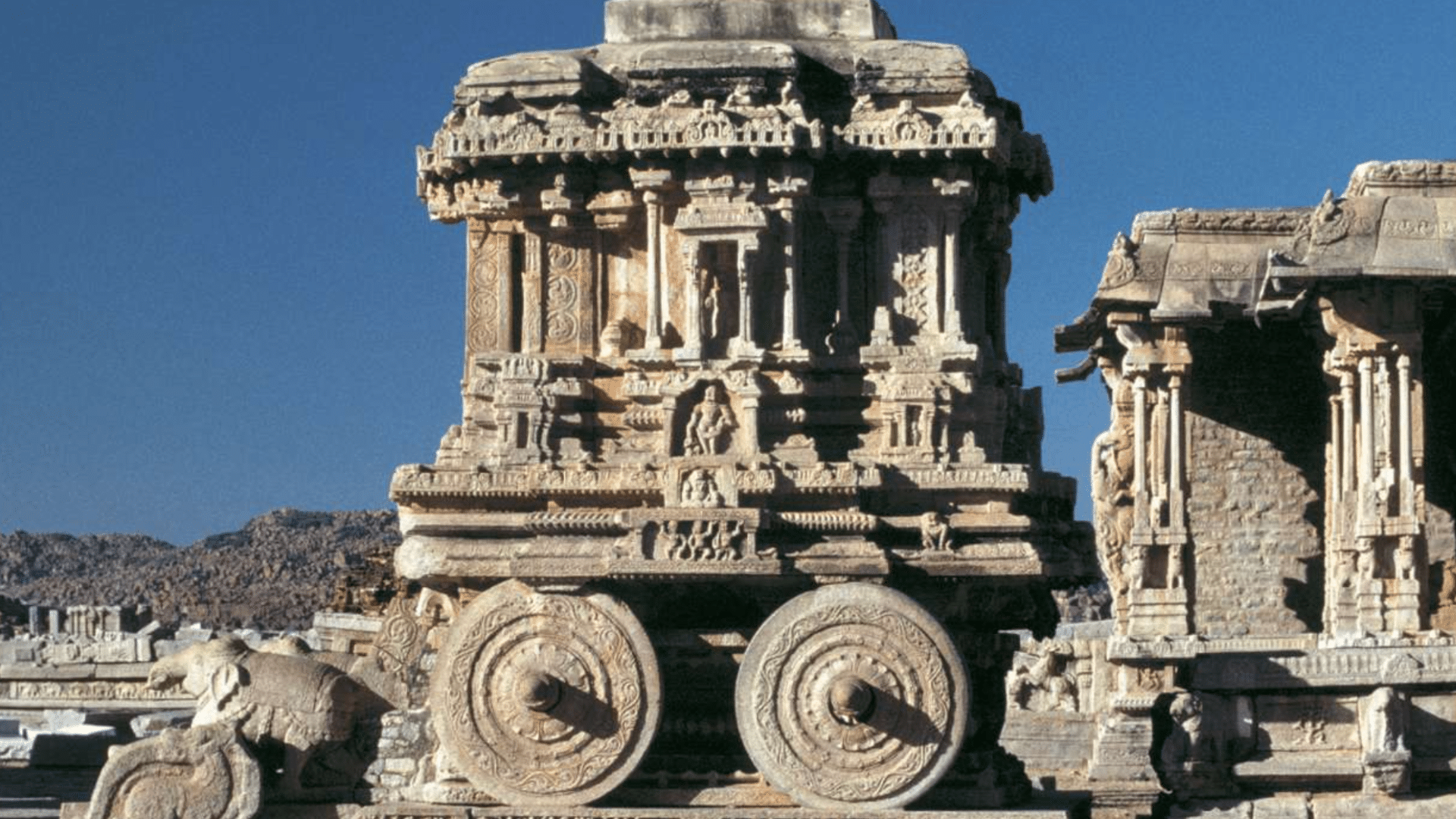
Built in the 15th century, the Vittala Temple is best known for its stone chariot and musical pillars that create different tones when tapped.
The main hall is decorated with figures of dancers, musicians, and travelers.
The design reflects both artistic detail and structural skill.
19.Chittorgarh Fort (Rajasthan)
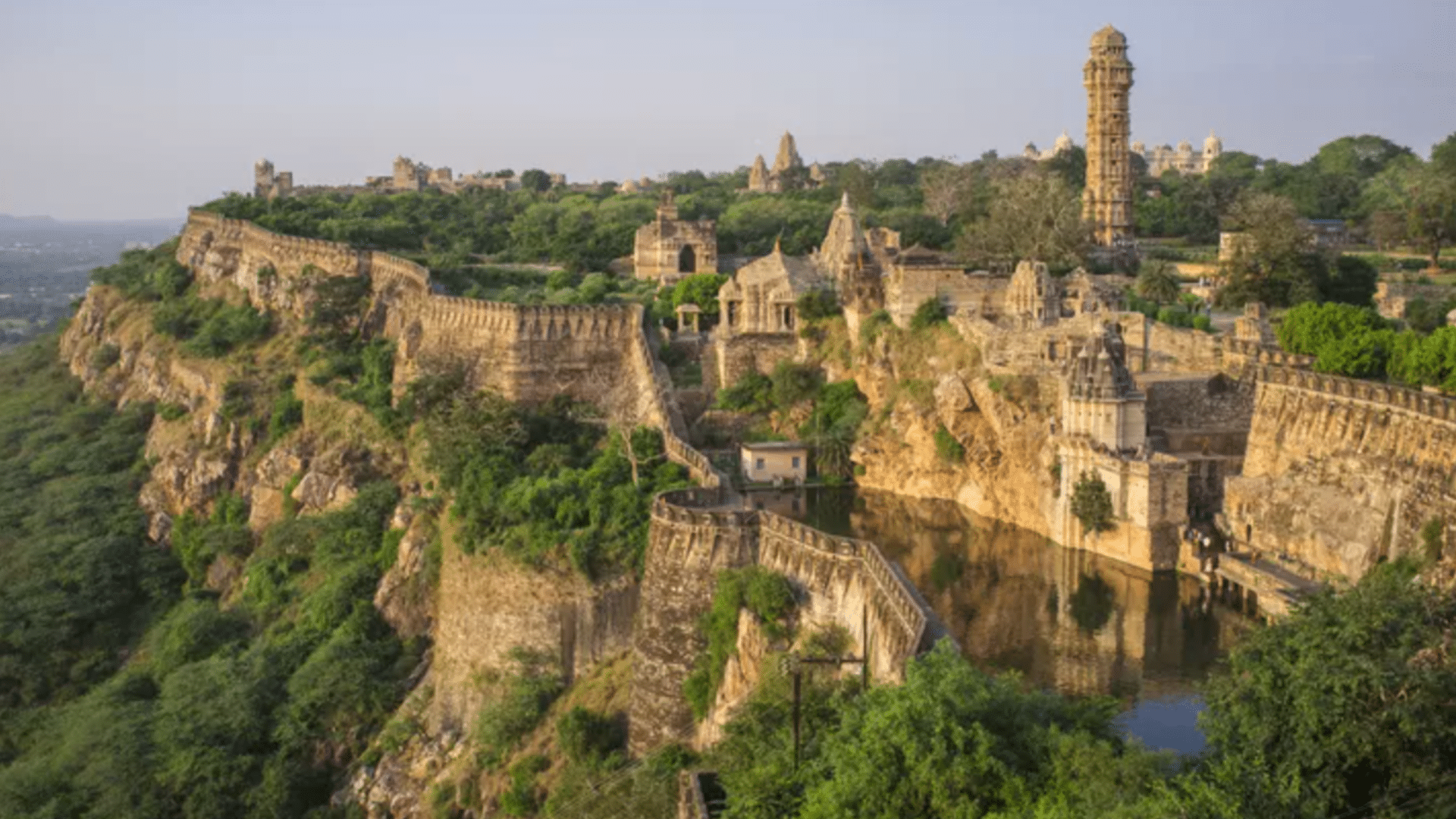
Chittorgarh Fort is the largest in India, covering 280 hectares on a hilltop that rises 180 meters. Built between the 7th and 16th centuries, it includes palaces, temples, gates, and towers.
The site is known for historic sieges and acts of defense carried out by its rulers and people.
20. Lingaraj Temple (Odisha)
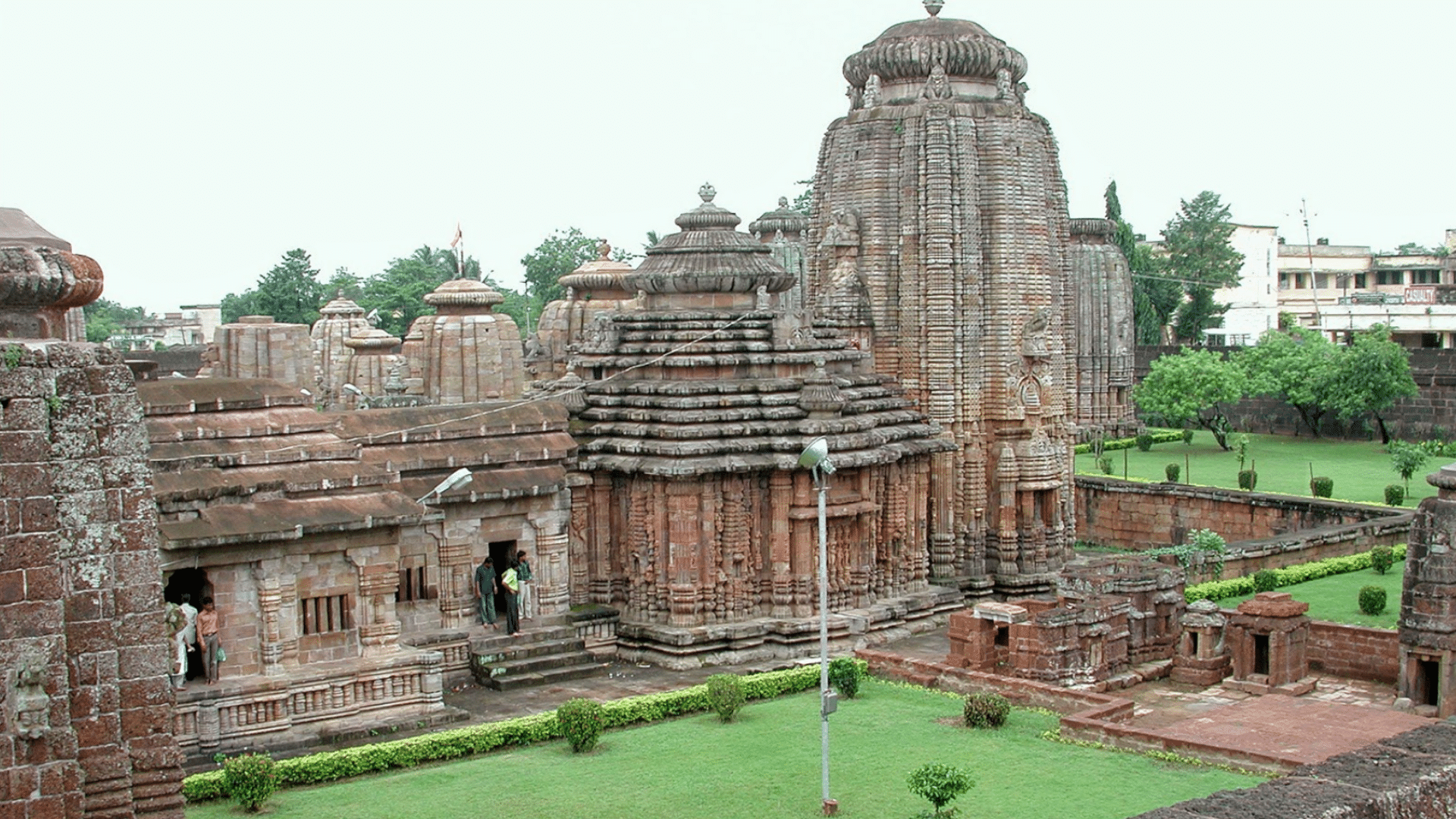
Dating to the 11th century, the Lingaraj Temple stands 54 meters tall and was built without mortar, using interlocking stones.
The exterior walls display rows of carvings showing scenes from mythology and daily life.
It follows the Kalinga architectural style and includes several smaller shrines in the temple grounds.
21. Sun Temple (Modhera, Gujarat)

Built in 1026–1027 CE by King Bhima I, the Sun Temple at Modhera includes a stepped tank with 108 shrines, a hall with 52 carved pillars, and an inner chamber that once held a statue of the sun god.
The temple is positioned to allow sunlight to reach the idol during equinoxes, connecting the structure with solar movement.
Architectural Styles of Ancient Indian Buildings
Ancient Indian architecture represents a remarkable legacy of artistic and engineering achievement.
These structures served functional and religious purposes but also acted as expressions of cultural identity, technological progress, and societal values across different periods of Indian history.
Each architectural style developed its own distinctive characteristics while maintaining connections to the broader traditions of the subcontinent.
Indo-Islamic Architecture
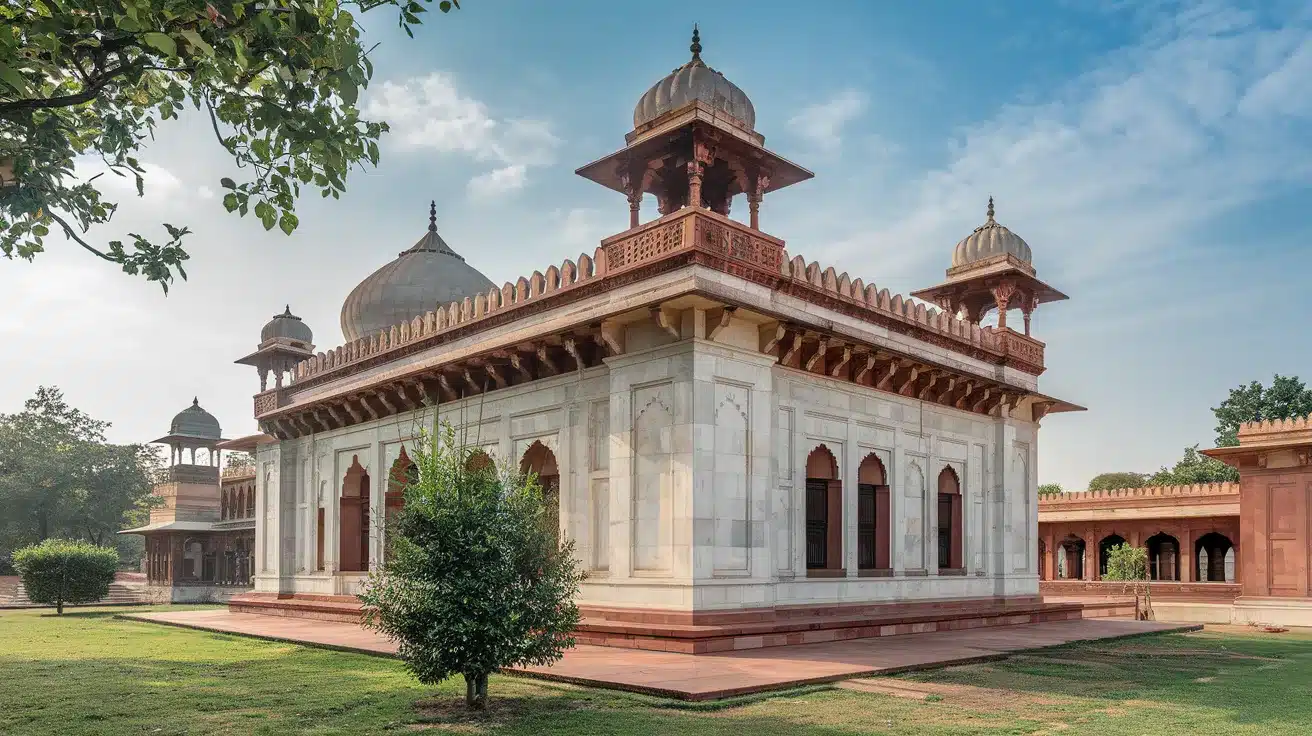
Indo-Islamic architecture represents the fusion of Islamic and Indian design elements that emerged after Muslim conquests in the subcontinent.
The Qutub Minar in Delhi, a 73-meter tall tower built in the early 13th century, exemplifies this style with its tapering structure and intricate carvings.
Mughal architecture, a key part of Indo-Islamic style, peaked during the 16th and 17th centuries. It is known for symmetrical designs, bulbous domes, and ornate arches. White marble and red sandstone were widely used in these structures.
The Taj Mahal and Red Fort are prime examples of this architectural style.
Dravidian Architecture
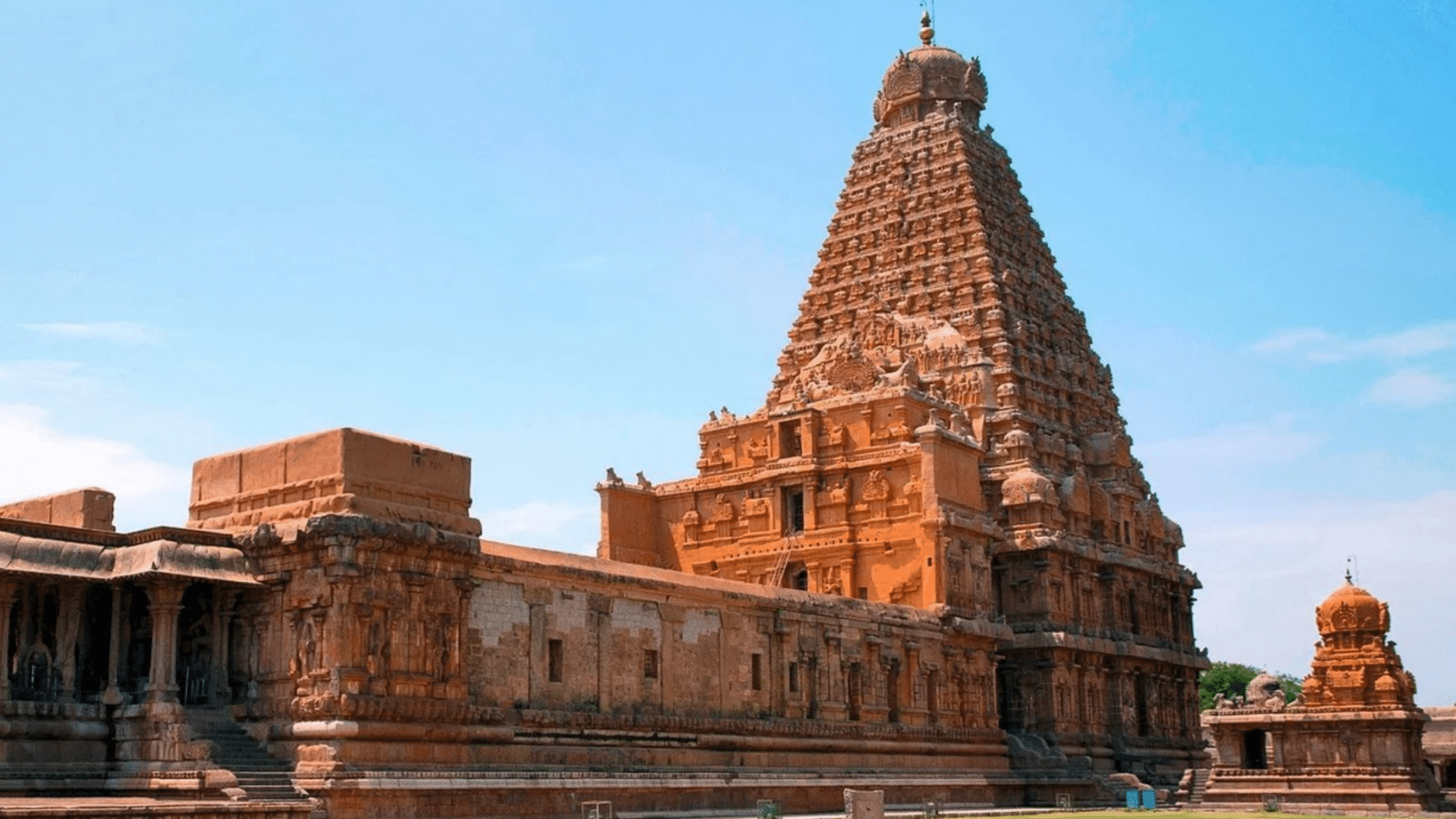
Dravidian architecture developed in South India, featuring massive temple complexes with pyramid-shaped towers (vimanas), ornate pillared halls, and concentric rectangular courtyards.
The Brihadeeswarar Temple in Thanjavur, built in the 11th century, showcases this style with its 66-meter-high vimana made of granite blocks.
The Meenakshi Temple in Madurai features vibrant gopurams (gateway towers) that reach about 50 meters.It is home to thousands of stone sculptures.
The temple showcases the artistic skill of South Indian craftsmen.
Rock-Cut Architecture
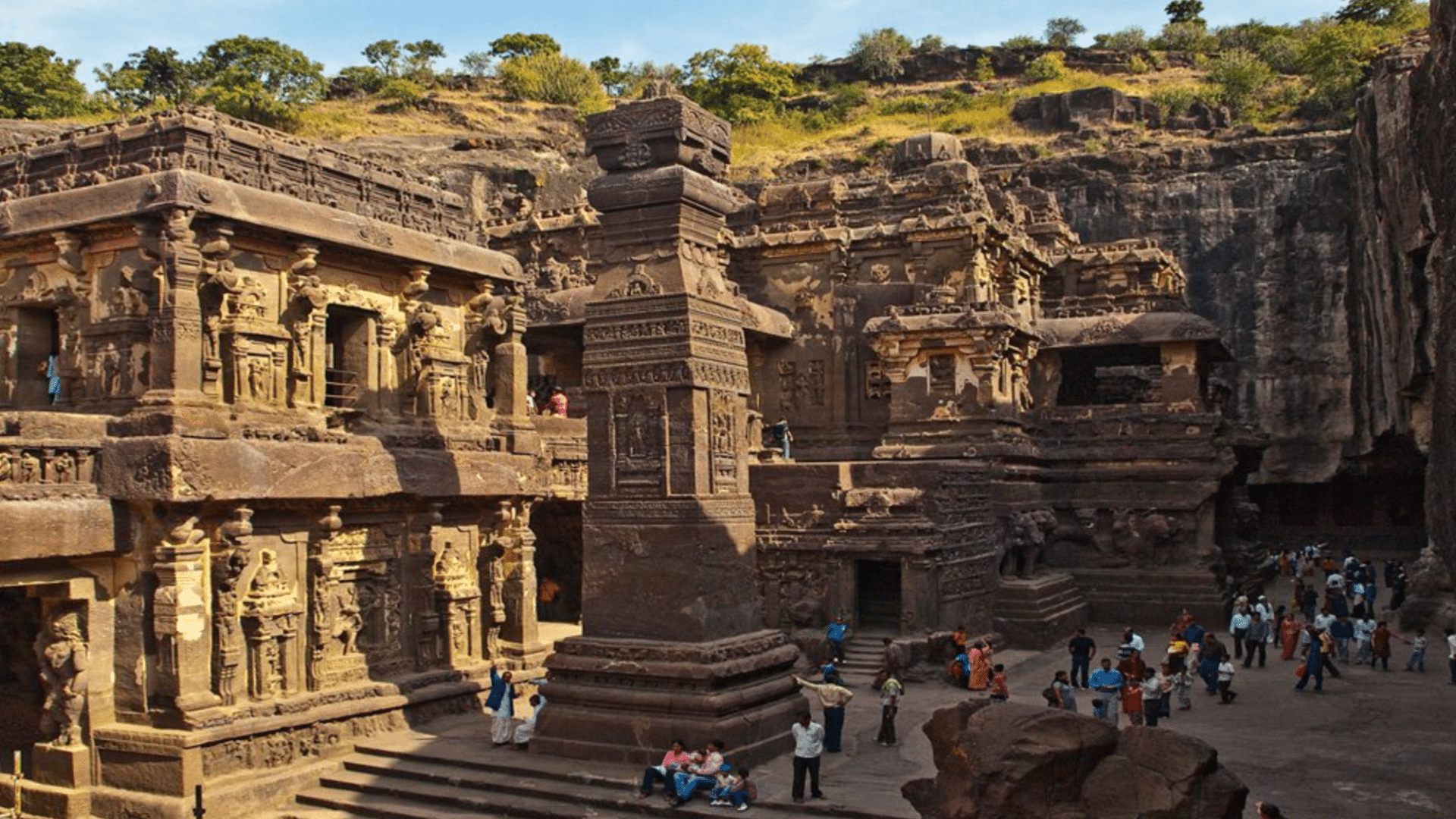
Rock-cut architecture involves carving structures directly into natural rock, a technique exemplified by the Ajanta and Ellora Caves in Maharashtra.
The 30 Buddhist caves at Ajanta, dating from the 2nd century BCE to the 6th century CE, are renowned for their elaborate paintings and sculptures depicting Buddhist tales.
Ellora, with its 34 caves, features Buddhist, Hindu, and Jain monuments, carved between the 6th and 10th centuries.
Among them, the Kailasa Temple stands out as the largest monolithic structure in the world, carved entirely from a single rock, showcasing the incredible skill and creativity of ancient Indian craftsmen.
Hindu Temple Architecture
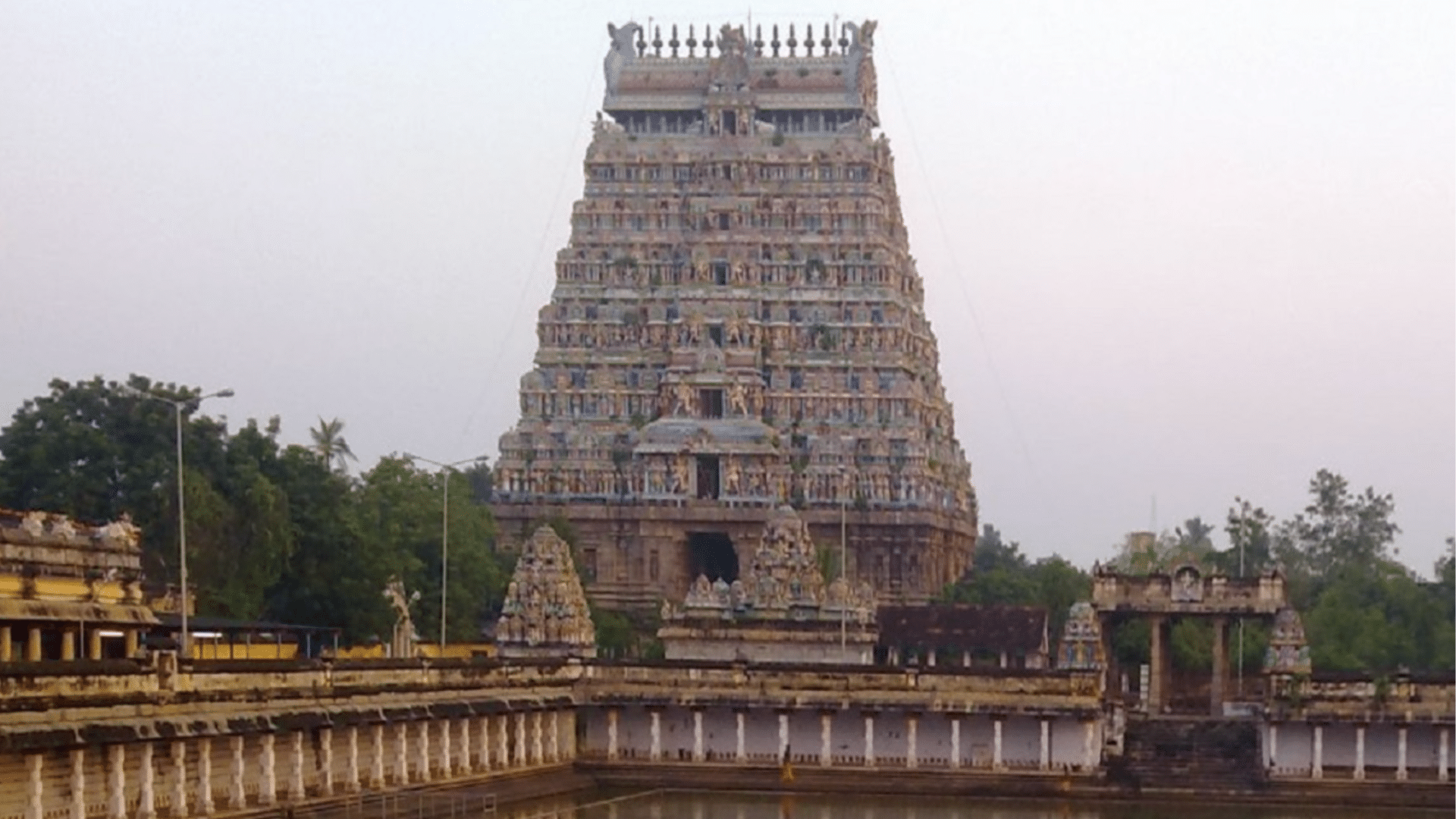
Hindu temple architecture evolved over centuries with regional differences. However, it shares key elements like the garbhagriha (sanctum sanctorum), mandapa (hall), and shikhara (tower).
Temples are often adorned with intricate carvings of deities and mythological scenes. Northern temples typically feature curvilinear towers. Southern temples are known for their stepped pyramidal towers.
The temples at Khajuraho, built in the 10th-11th centuries, showcase exceptional sculptural art.
The Sun Temple at Konark, constructed in the 13th century, demonstrates advanced astronomical knowledge in its design and precise orientation.
The Evolution of Ancient Indian Architecture
Indian architecture has evolved significantly over time. Indus Valley cities (2600–1900 BCE) featured grid layouts, good drainage, and standardized brick buildings. Early wooden structures later gave way to stone.
During the Buddhist period (3rd century BCE–5th century CE), stupas, viharas, and chaityas appeared. The Gupta era (4th–6th centuries CE) improved Hindu temple design.
In the medieval period, distinct regional styles emerged—Nagara in the north and Dravidian in the south.
Islamic influence began with the Delhi Sultanate in the 13th century, introducing domes, arches, and minarets. These elements blended with local techniques and reached a peak with Mughal architecture in the 16th–17th centuries.
Cultural and religious values shaped design choices. Buddhist ideals influenced monasteries, Hindu temples reflected cosmic beliefs, and Islamic views reshaped gardens and interiors.
Different patrons—Buddhist traders, Hindu kings, and Muslim rulers—left their mark on India’s architecture based on their traditions and needs.
Conclusion
Ancient Indian buildings remain vital treasures deserving protection and study. These structures offer irreplaceable insights into historical construction techniques, artistic achievements, and cultural values spanning thousands of years.
Each monument tells a unique story about the communities that created them, from their spiritual beliefs to their scientific knowledge.
Preserving these architectural marvels honors the craftsmanship of past generations and maintains crucial connections to India’s diverse heritage.
By visiting these sites, studying their designs, and supporting conservation efforts, we can ensure these magnificent structures continue to educate and inspire future generations about India’s extraordinary architectural legacy.
Frequently Asked Questions
What is the most famous ancient building in India?
The Taj Mahal is the most famous ancient building in India, built by Emperor Shah Jahan in memory of his wife Mumtaz Mahal which represents love and architectural brilliance
How do ancient Indian buildings reflect the country’s cultural and religious history?
Ancient Indian buildings reflect the country’s cultural and religious history through their design which symbolizes spiritual beliefs, artistic expressions, and advanced engineering, showcasing India’s diverse heritage.
Why is it important to preserve ancient Indian architecture?
Preserving ancient Indian architecture is crucial for maintaining cultural heritage, understanding historical craftsmanship, and connecting with the country’s spiritual and artistic traditions.

